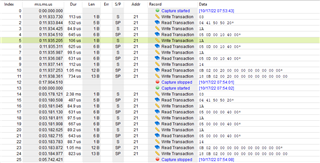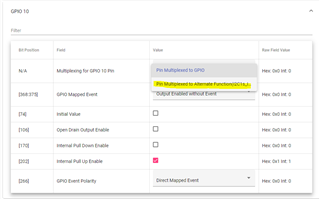I am using the TPS25750D version of this chip. Pin 10 (I2Cs_IRQ) is not asserting when we connect a charge cable. We want this pin to pull low when a charge cable is plugged in.
We had the GPIO 10 configured as an interrupt and have the default interrupt events enabled in the advanced configuration tab in the GUI.
We see the PlugInsertOrRemoval bit in the INT_EVENT register enabled when we plug in the cable, but the interrupt pin stays high.
We have a 100k pull up to this pin to not keep it floating.
To verify the hardware, we configured the pin as a GPIO and pull low with a plug event. This worked but we need it to be an interrupt pin not a GPIO to detect different events or states of the PD chip.
We used GUI version 7.0.3 to download the binaries.
Is there any other special advanced settings we need to configure to properly enable this interrupt pin?
Could the binary not have downloaded correctly to the configs we wanted?
Thanks,
Victor






